First impressions: Munro’s no-nonsense electric off-roader
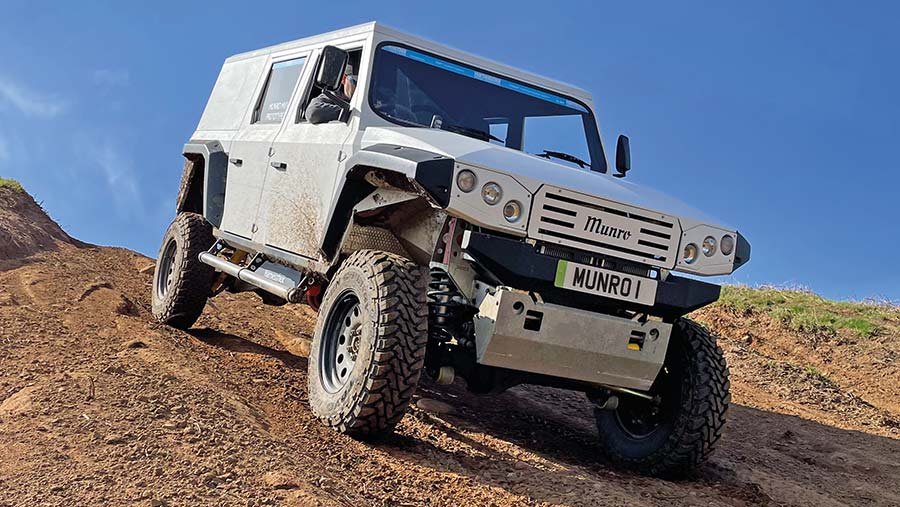 © James Andrews
© James Andrews As the 2030 ban on sales of new petrol and diesel vehicles looms, precious few electric options have emerged for those in need of a proper off-roader.
Mainstream manufacturers are instead focusing their efforts on high-volume SUVs and hatchbacks, leaving the field open for a number of smaller firms.
Their endeavours have already spawned the quirky MWM Spartan and a series of conversion kits for the venerable Land Rover Defender.
However, to date, there are no new battery-powered off-roaders on sale in the UK that can tow 3.5t and carry a 1t payload.
See also: British-built Ibex 4×4 offers Land Rover Defender alternative
Glasgow-based firm Munro is changing that.
After failing to find a vehicle suitable for their needs, former agricultural contractor Russ Peterson and business partner Ross Anderson decided to build one themselves.

Left to right: Russ Peterson, Ross Anderson and Petr Jicha © James Andrews
The aim was to create a simple, capable truck that could traverse tough terrain, carry five people with plenty of cargo, and not cost the earth.
It also had to be able to tow heavy loads and have enough battery power to travel 150 miles on a charge.
Their goals were clear, but with limited resources to play with, they couldn’t design a bespoke vehicle from scratch. Instead, they went in search of a platform that could be adapted to their requirements.
It wasn’t long before the Sheffield-built Ibex came onto their radar. Built by Foers Engineering, these tough trucks share many underpinnings with Land Rover’s original Defender.
But with a galvanised steel monocoque chassis, higher suspension lift and a host of upgraded components, they’re built to withstand a lot more abuse.
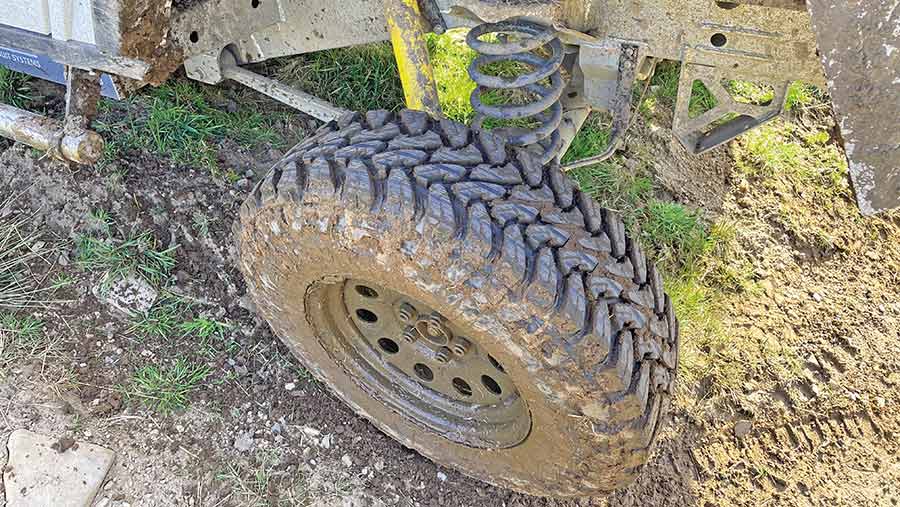
Running gear is similar to a Defender, but re-engineered by Munro © James Andrews
Owner David Foers was keen to get involved in the Munro project and set about fabricating a modified version of his 130in chassis to accept the electric motor and battery packs.
Mr Peterson and Mr Anderson then assembled a small team of experts to help put a prototype together.
Work began in 2019 and by late 2021 they had their first vehicle ready for testing.
This helped them secure an additional £750,000 of funding, allowing two more prototypes to be built and for production of customer vehicles to begin.
The first few of these are due to be delivered later this year.
To find out how the vehicle performs, we met up with the team and their first prototype vehicle at the Drumclog off-roading centre, just a few miles from the firm’s new assembly plant in East Kilbride.
Off-road running gear
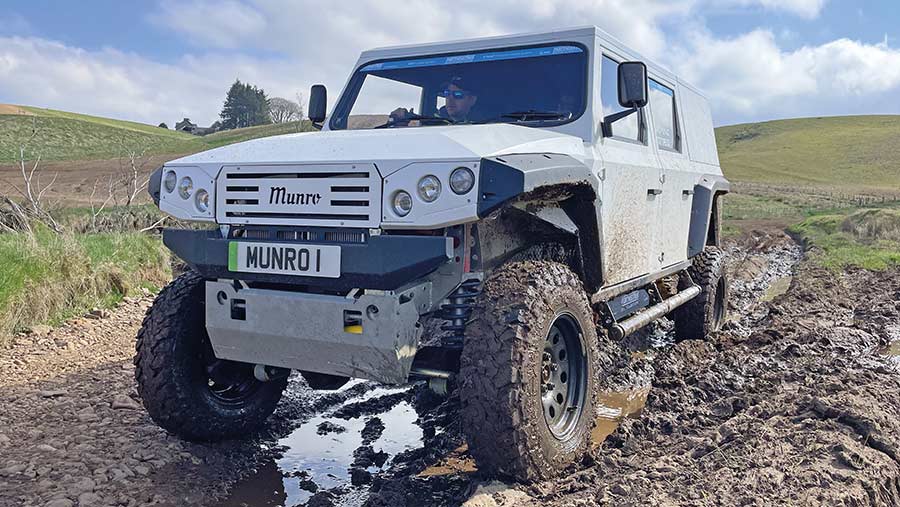
Production vehicles with have locking axles in addition to the central diff lock © James Andrews
Save for the batteries and electric motor, the Munro’s off-road running gear is configured just like a Defender.
This means it has solid axles, prop shafts and a two-speed transfer case with central diff-lock to which the drive motor is directly bolted.
Rather than using off-the-shelf Land Rover bits, the firm has re-engineered them to give extra strength and iron out some of the weaknesses of the original designs.
They will also be fitting axle lockers in the standard spec, so the vehicle will be able to drag itself along even if only one wheel has traction.
Munro’s decision to stick with these off-roading staples means there are few concessions to make when switching from fossil fuel power.
The engine might have been replaced by an electric motor and the main gearbox has been ditched, but drivers can use the same tactics to get themselves unstuck.
These components also give it the all-important 3.5t towing capacity and the ability to carry a 1t payload, putting it in line with most double-cab pickups.
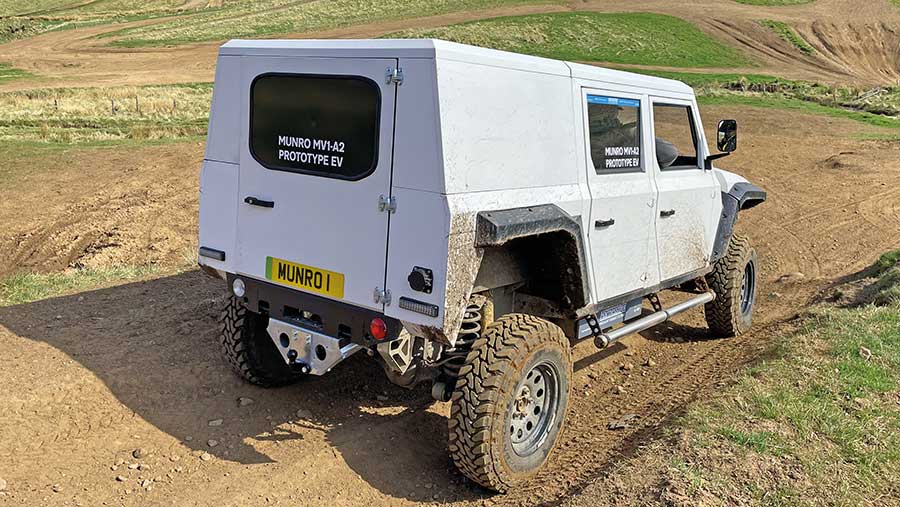
© James Andrews
Another bonus is that owners have access to a huge catalogue of spare parts, from multiple outlets, meaning they are not tied to getting spares from one manufacturer.
Direction changes are handled by three buttons on the dash – forward, neutral and reverse – and, for the time being, there’s just one drive mode.
However, production versions are likely to have on- and off-road modes that vary the amount of regeneration in the electric motors.
In practice, this means more aggressive engine braking will be available for off-road driving so that the vehicle will be able to descend steep slopes without the driver having to use the brakes.
Batteries and range
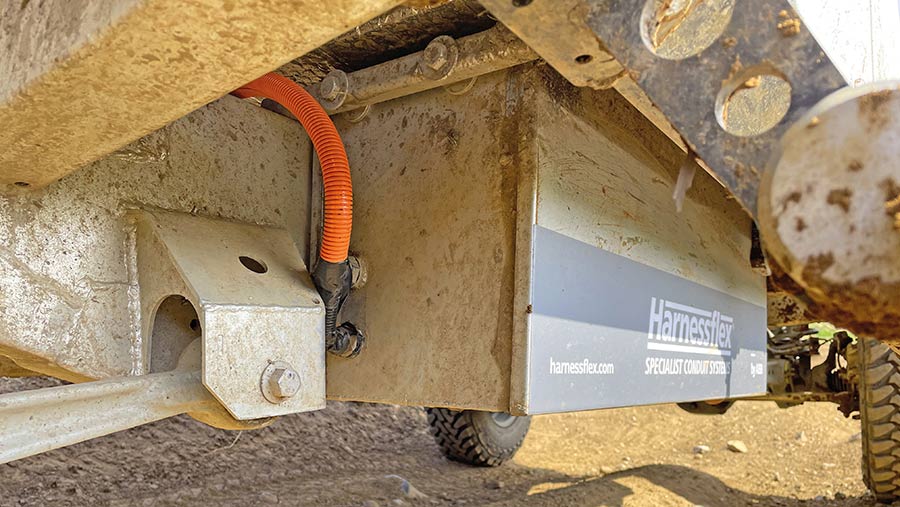
Batteries are mounted underneath and should give at least a 150-mile range © James Andrews
The Mark 1 prototype is being tested with a 160kW motor, but production versions will feature a 220kW unit, equivalent to 295hp and 600Nm peak torque.
This should give it considerably more poke than a typical double-cab pickup, such as the 213hp and 500Nm Ford Ranger Wildtrak.
The battery pack configuration is yet to be finalised, but Munro says it will fit enough lithium-ion cells to give at least 150 miles of range in normal driving.
Towing heavy trailers will reduce this, but as the vehicle isn’t yet registered for the road, the firm hasn’t carried out enough tests to determine by how much.
When the cells do run out of steam, 100kW-compatible DC charging will get it back to 85% in about 30mins. Like all electric vehicles, the last 15% is a little slower to replenish.
To keep the centre of gravity low, all the batteries are housed in waterproof boxes slung under the chassis rails, making it relatively simple to add cells and extend the range.
Work is also under way to add a vehicle-to-load system that allows power-hungry electrical equipment such as welders to be run from its batteries.
Interior
There are virtually no superfluous bits of kit in the Munro’s cabin, with bare metal hose-out footwells, manual winding windows and a flat steel dash that houses only essential switchgear.
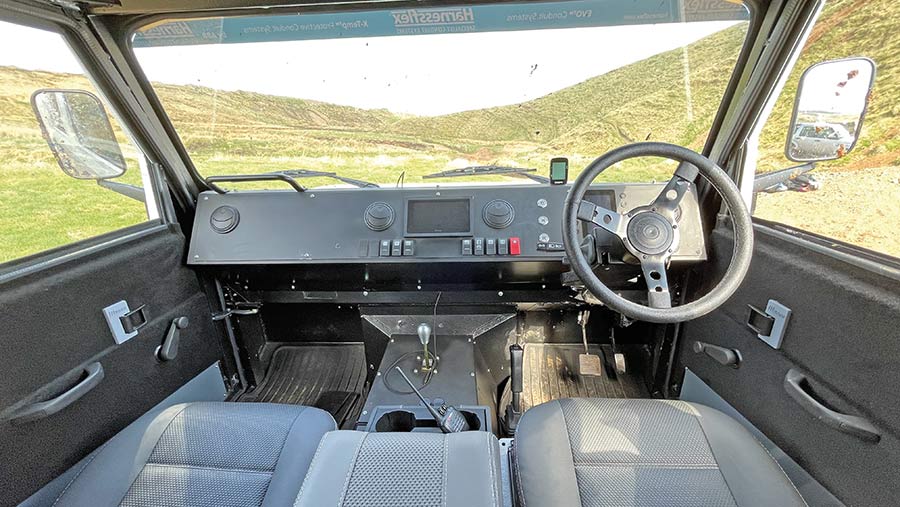
The interior has only the essentials, although heating and air-conditioning are standard © James Andrews
It is built with work and hardcore off-roading in mind, but there are one or two creature comforts, such as air conditioning and a double-height touchscreen display with Apple Car Play and Android Auto.
Munro’s choice of chassis means there is room for five passengers – two in the front and three in the back – with a 1cu m covered storage space behind.
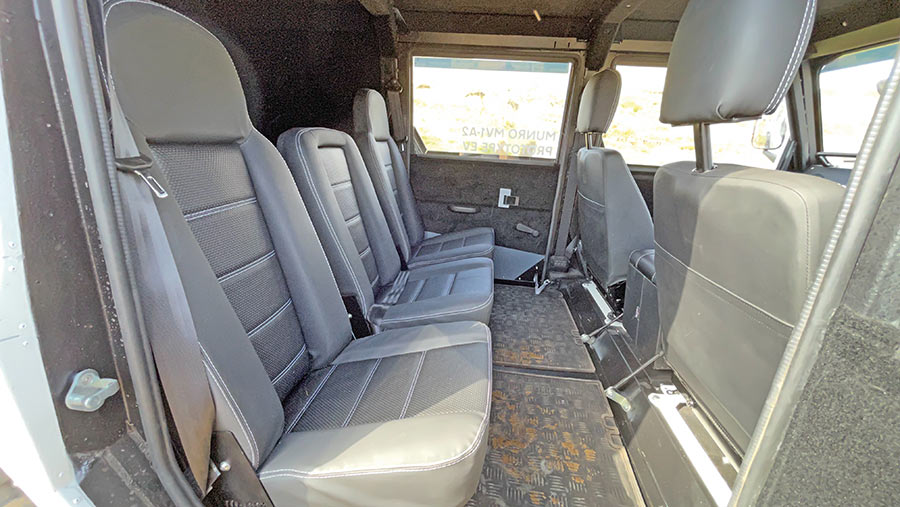
The Munro has a back-to-basics interior – albeit with some mod cons © James Andrews
This is open to the cabin, but a bulkhead can be added to protect occupants from the load. The rear canopy can also be removed, converting it into a pickup.
Most of the soft furnishings come from Land Rover interior specialist Exmoor Trim and are clad in a water-resistant, wipe-clean material.
Some sound-deadening material has been incorporated, but cabin noise is considerable, particularly when the motor spools up.
It doesn’t have the rattle of an original diesel Defender, but is surprisingly loud for an electric vehicle.
Heating and air conditioning will come as standard, as will heated seats.
The latter might seem like an extravagance, but the idea is that warming passengers directly uses less battery than heating the whole cabin.
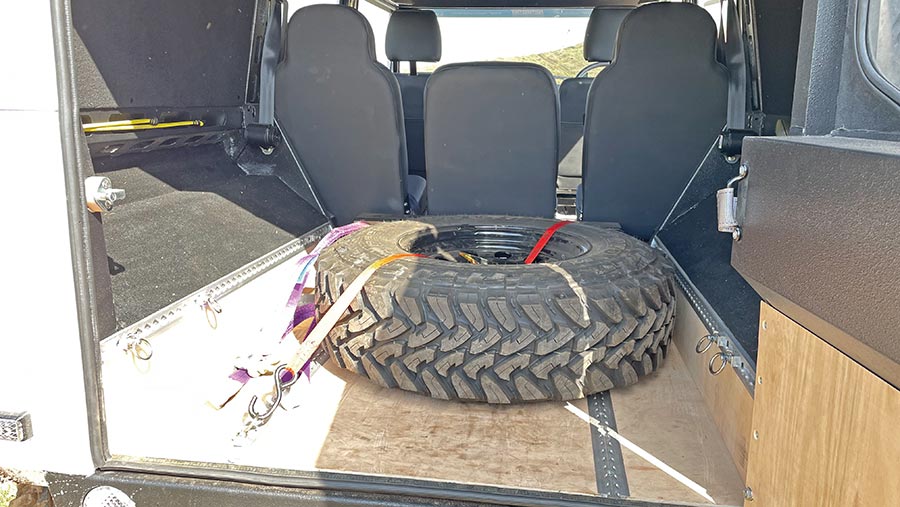
A bulkhead can be fitted at the front of the load space © James Andrews
Price and running costs
Prices start at £65,000, which does seem high for a utilitarian off-roader.
However, battery technology is still expensive, and next to some Defender conversions at more than £75,000 plus the cost of the car, it starts to look like good value.
Munro has also designed it for a long lifespan. It reckons the body and chassis will last at least 30 years and the bolt-on battery packs and motors are easy to replace as technology improves.
General running costs should also be lower than for a diesel off-roader, with minimal servicing needs, no road tax and cheaper fuel.
Customers who ordered early should be taking delivery towards the end of 2022, but the main production run will start in 2023. Build slots are up for grabs and Munro is asking for a £500 deposit to secure one.
Ibex 4×4
Ibex off-road vehicles are built by Foers Engineering in Sheffield and are essentially a tougher version of the original Land Rover Defender.
Several models are available, all of which are based on a sturdy ladder chassis and cabin monocoque formed out of laser-cut steel plate.
Folded aluminium body panels are riveted and bonded to this framework, and are designed to be easy to replace if pranged.
A few diesel and petrol engines are on offer, with one of the most popular for working vehicles being Land Rover’s five-cylinder TD5.
The drivetrain is a Land Rover-style, permanent four-wheel-drive setup with centre and axle diff-locks, teamed with a manual or automatic transmission. Towing capacity is 3.5t and they can carry a 1.5t payload.
Buyers can choose a complete vehicle with brand-new components, a complete vehicle with new chassis and used engine and running gear, or a build-it-yourself chassis kit.
